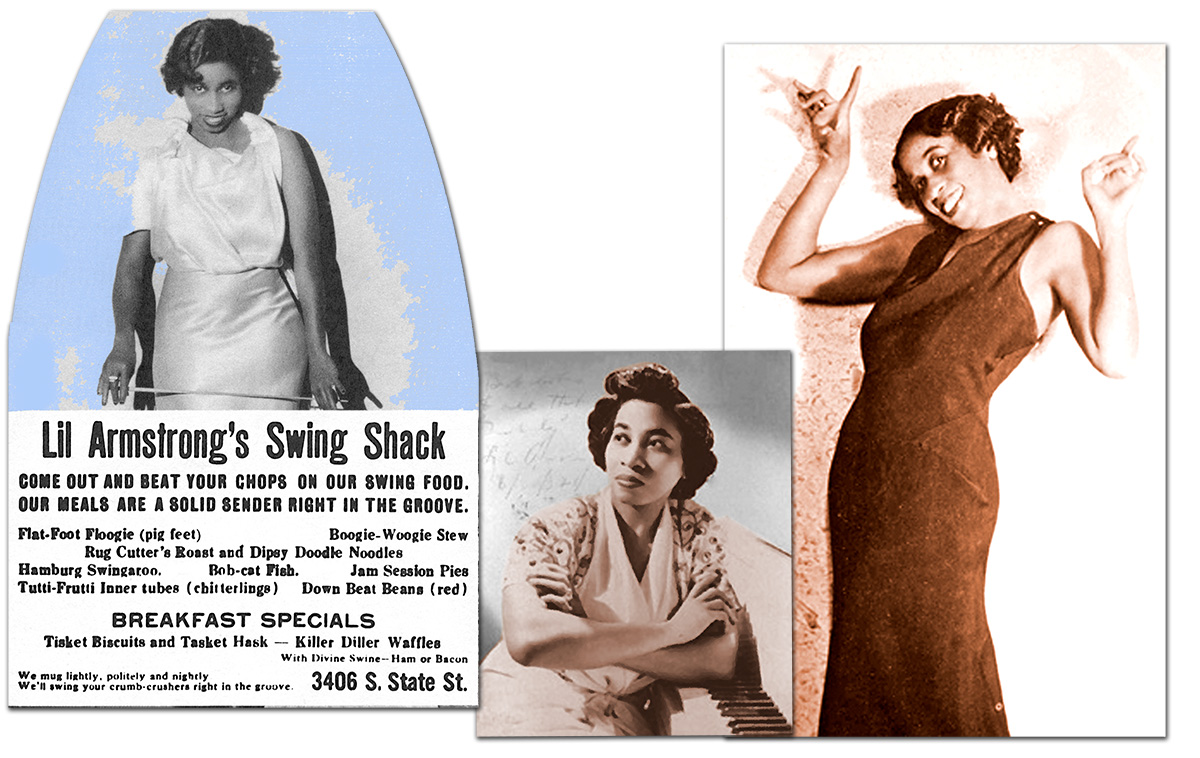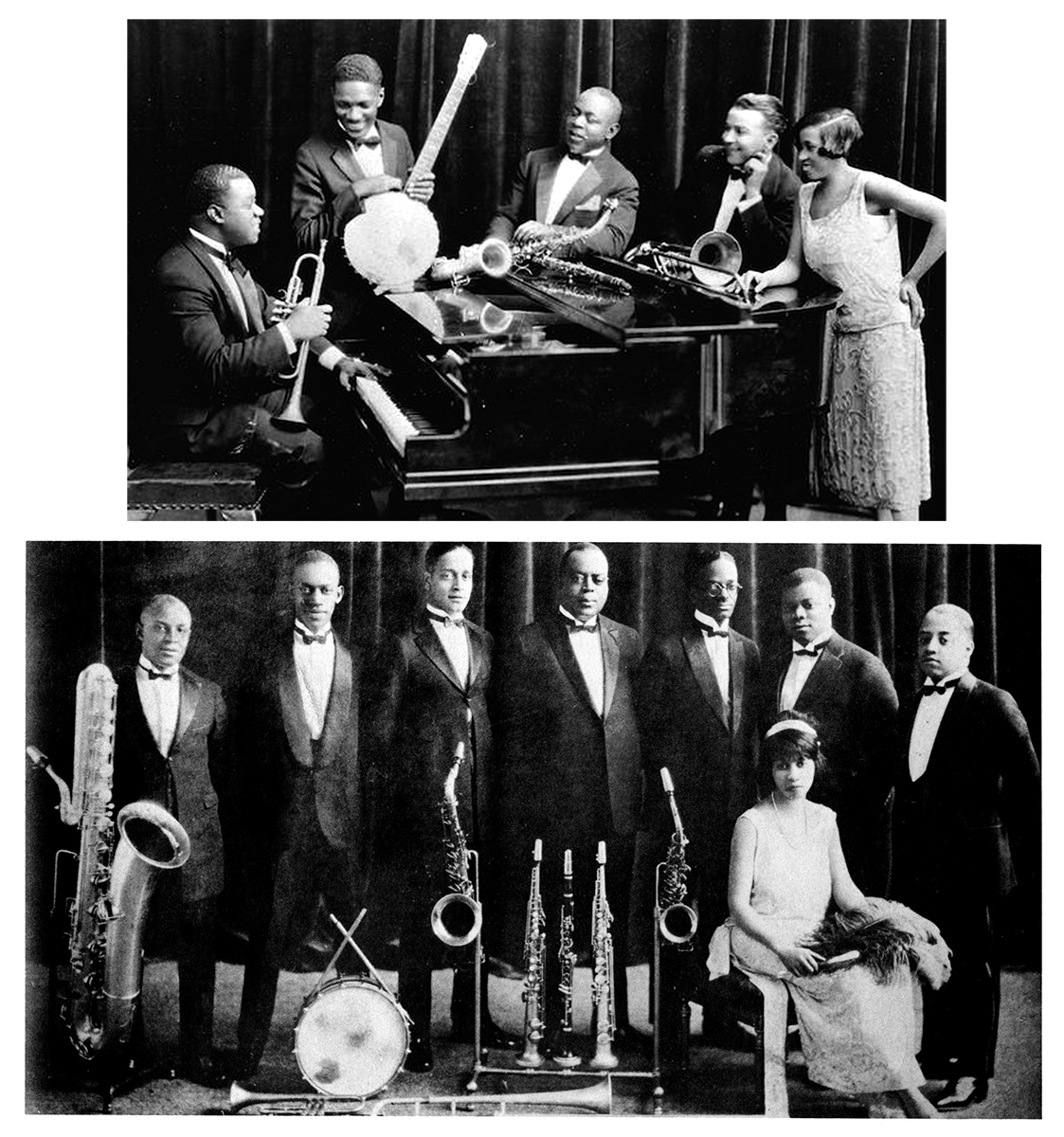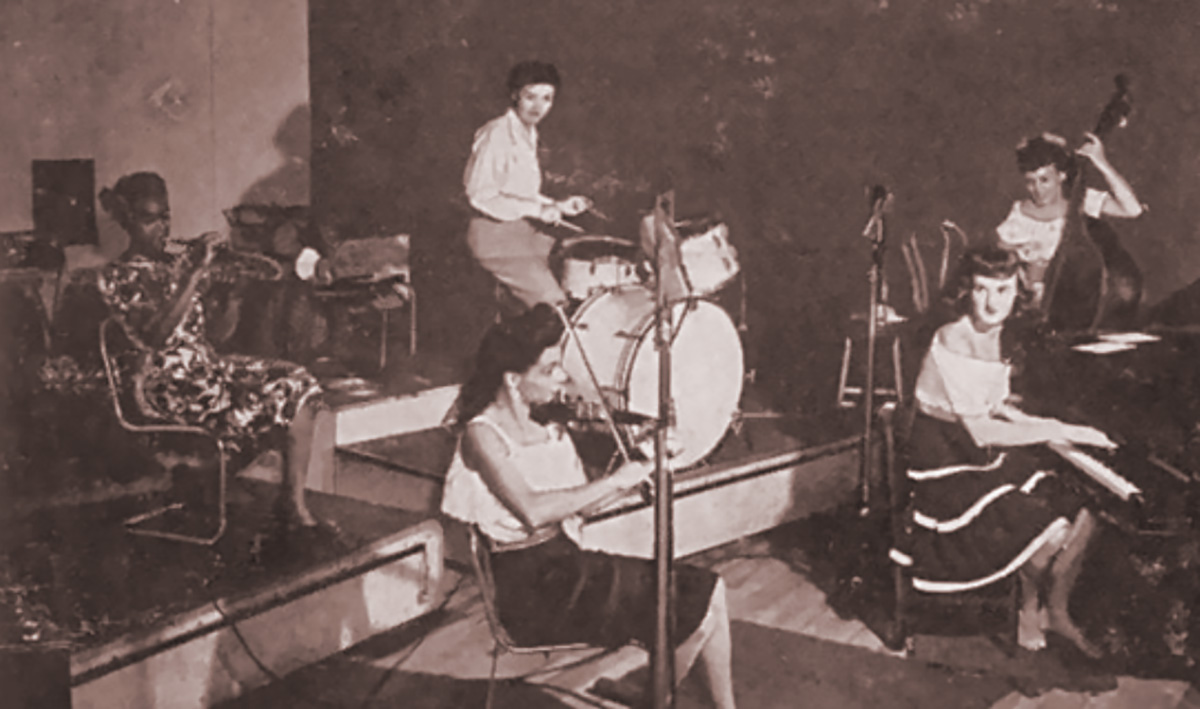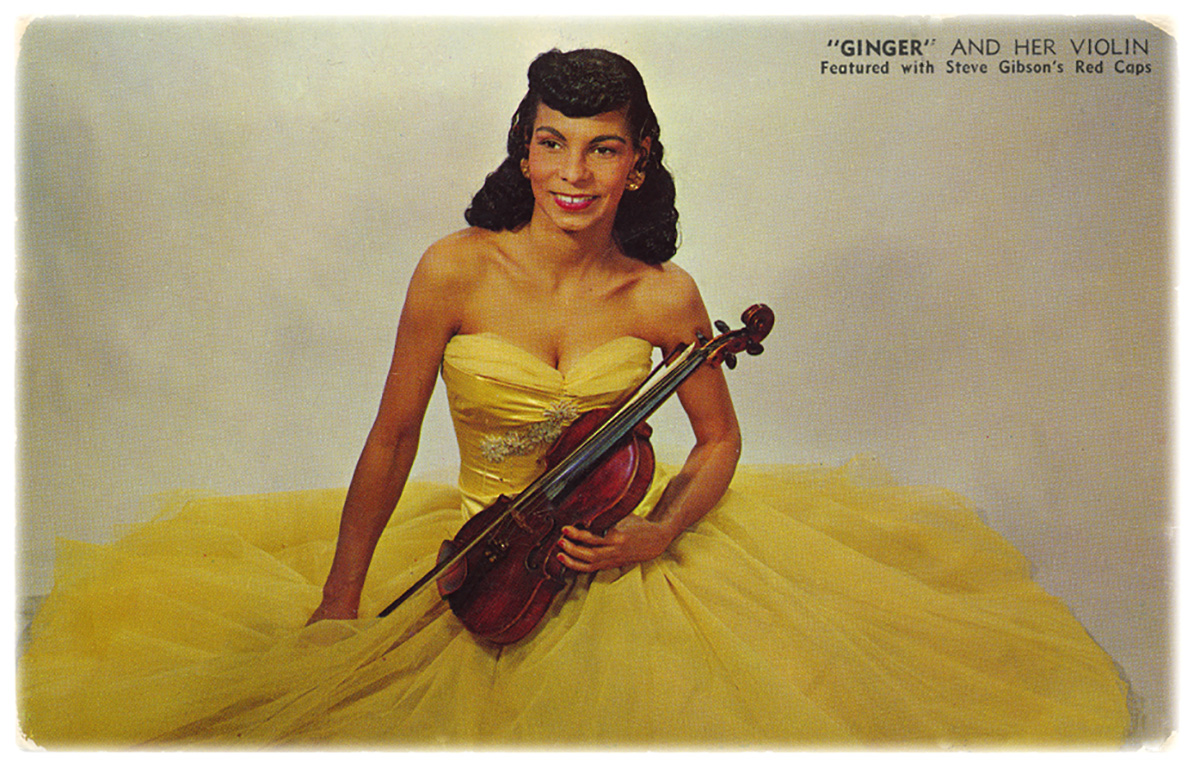Read Dynamic Women of Early Jazz and Classic Blues, Pt 1
Concealed in the shadows of early Jazz and Blues history are dynamic and accomplished women who nurtured, guided and developed the music. In this column are profiles of Ethel Waters, who was the most popular female singer in America around 1930; accomplished jazz violinist Ginger Smock and the vaudeville trouper Sophie Tucker who was known as “The Original Red Hot Mama.” Also featured are the tough and independent “Mother of the Blues”Ma Rainey and Mary Lou Williams–a composer, arranger, bandleader and Jazz giant who became a bold modernist.

Lil Hardin in the mid-1930s. These and selected images below are from Black Beauty, White Heat (Driggs & Lewine 1982).
Lil Hardin
Lil Hardin (Armstrong) (1898-1971) was a bright, talented,arranger, composer, bandleader and singer with a flair for promotion. She forged her own path through the male-dominated world of music. But she has yet to receive full credit for her seminal role as midwife to the birth of Jazz on record.
Lil Clip A–King Oliver and married to Louis,Got No Blues, Droppin’ Shucks.mp3
Lillian was piano player for bandleader and cornet player Joe “King”Oliver in Chicago and had a key role organizing the landmark records of King Oliver’s Creole Jazz Band. Unlike the band men including her future husband Louis Armstrong, Lil had a formal musical education and likely played a substantial role behind the scenes crafting the Creole Jazz Band recording sessions in 1923.
These were the earliest records by a genuine African American Jazz band – with the sole exception of Kid Ory’s obscure handful of Sunshine Records discs made in Los Angeles a couple years earlier. The Oliver discs sold vigorously and were re-issued in multiple re-stampings on multiple labels.
Lil Clip B – First job, Born to Swing, Knock Kneed Sal.mp3

Midwife to the birth of Jazz on record, Lil Hardin played a key role organizing innovative recordings by King Oliver’s Creole Jazz Band in 1923 (at bottom, Oliver center) and her husband Louis Armstrong’s landmark Hot Five and Hot Seven sessions of 1925-27 (top, Louis far left).
As the second wife of Louis Armstrong, she tirelessly built his success, launched his solo career, arranged his early sessions and supported his musical ventures. Lil wrote down Louis’ ideas, fortified his talent, nurtured his confidence and promoted his popularity.
Hardin played a key role in the OKeh Records sessions of Louis Armstrong’s Hot Five and Hot Seven between 1925-27. These four dozen pivotal recordings changed the path of Jazz and introduced its biggest star. Lil supplied the arrangements, many of the original tunes and a rhythmic piano foundation. The couple separated in 1931 but were not officially divorced until 1938. Though Louis’ rapid elevation left her behind, their friendship endured.
Lil Clip C– Split with Louis, When I Went Back Home, You Shall Reap What You Sow, Harlem on Saturday Night, Brown Gal.mp3
By the mid-1930s Lil Hardin-Armstrong had established her own career as a successful singer, pianist, songwriter, bandleader and all-around music professional. She even led some of the first all-female jazz bands in Harlem in 1931 and Chicago in 1934.
From 1936 to ’40 Hardin was very productive at Decca Records, recording under her own name. She functioned as a house pianist accompanying blues singers Rosetta Howard, Peetie Wheatstraw, Blue Lu Barker, Alberta Hunter and others. Her first Decca session yielded several effervescent records and a solid-seller entitled “Brown Gal.”
Decca subsequently promoted Lil “Brown Gal”Armstrong for about 25 sides. Her hot little bands included such well-known musicians as Buster Bailey (clarinet), J.C. Higginbotham (trombone), Chu Berry and Prince Robinson (tenor sax) and bassist Wellman Braud (of Ellington fame). She favored hot trumpet players Jonah Jones and the excellent but little-known Joe Thomas, who is heard on most of the sides.
Lil Clip D – Perdido Street Blues, conclusion and East Town Boogie (1961).mp3
Recording and performing for most of her adult life, Lil was a complete musician. A creative woman of substance and style, she also tried her hand at running a restaurant and dabbled in fashion and tailoring. Despite their years-long estrangement and divorce they remained productively associated.
Hardin’s death was eerie coming shortly after Armstrong’s. She had always considered herself Mrs. Armstrong in some sense and still lived in the house they bought in the 1920s. At an August 1971 memorial for Louis in Chicago, she collapsed on stage from a heart attack and could not be revived.
Ginger Smock
Superb jazz violinist Emma “Ginger” Smock (1920-1995) was versatile and talented but has not received due recognition. Formally trained, she was a stunning beauty who played superb jazz violin in the style of Stuff Smith. Smock appeared on television in Los Angeles where she had her own TV show and performed with the Los Angeles Symphony. During the 1960s-70s Smock recorded with Rhythm and Blues groups and was concertmaster at several hotels in Las Vegas — backing the likes of Sammy Davis, Jr.
On her web page, accomplished jazz violinist Laura Risk sums up her PhD research into Smock’s “raucous, hard-swinging intensity. Her composition ‘Strange Blues’ . . .evidences a mature musical voice: her solo is rhythmically complex, technically demanding, alternately sassy and delicate, with long melodic lines spun out across the changes.”
Until recently, the only music available was Smock’s 1946 session playing solid-body electric violin with the Vivien Garry Quintet. A collection of her recordings was issued for the first time in 2005 by a small British company called AB Fable. Among the rare contents are “Exactly Like You” from KTLA television, tracks from the 1946 ‘Girls in Jazz’ RCA sessions and “Strange Blues” with the obscure septet of Cecil Count Carter.
Smock clip – Exactly Like You (1953), Strange Blues (1953), I’m in the Mood for Love (1946).mp3

This appears to be the 1946 RCA “Girls in Jazz” recording session of the Vivien Garry Quintet. L to R: Edna Williams (trumpet), Ginger Smock (violin), Dody Jeshke (drums), Wini Beaty (piano) and Vivien Garry (bass).
- (Page 1 of 3)
- Next page →


